STEFAN BRÜGGEMANN'S LINES OF FAITH, AT CASA DE MEXICO
Stefan Brüggemann (Mexico City, Mexico, 1975) disembarks at Casa de México with Dos líneas (fe), a series that is understood as an installation and that starts from the impact and the apparent simplicity exposed to develop the concept of inheritance and its satellites. The Mexican conceptual artist uses the power reflected by symbols, religion and history, an element that he deploys, sometimes explicitly, in his large-format works.
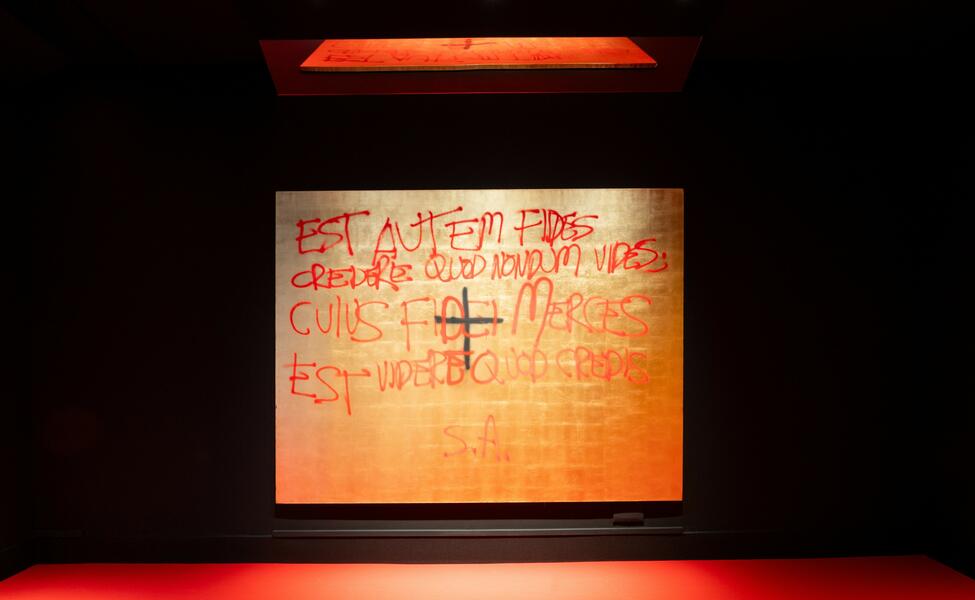
Five canvases make up the exhibition curated by Mathieu Copeland, four of which are covered with gold leaf and one with silver, material elements of enormous symbolic charge within the iconography most linked to the colonial, to which is added the strength of crosses that, traced with aerosol, seem to burst in to reinforce the concept of religion, as more evident, but also of the cultural clash and its subsequent unity.
History is also vital in the conceptual understanding, being, if possible, also reflected in an evident way in the years that form the titles, inevitable references to those key moments that give personality to the whole installation. The quotation of St. Augustine in the central painting and the arrangement of mirrors in the upper parts of each canvas in reference to St. Peter's desire to be executed in an inverted manner advocate, once again, the most accepted symbology as a vehicle of that historiography, despite the fact that it has been intervened with more urban and contemporary techniques.
-
Stefan Bürggemann_Dss líneas (fe)_Casa de México I
-
Stefan Bürggemann_Dss líneas (fe)_Casa de México I
-
Stefan Bürggemann_Dss líneas (fe)_Casa de México II
-
Stefan Bürggemann_Dss líneas (fe)_Casa de México III
-
Stefan Bürggemann_Dss líneas (fe)_Casa de México IV
-
Stefan Bürggemann_Dss líneas (fe)_Casa de México V
-
Stefan Bürggemann_Dss líneas (fe)_Casa de México VI
-
Stefan Bürggemann_Dss líneas (fe)_Casa de México VII
Dos líneas (fe), by Stefan Brüggemann can be seen until November 17 at the Fundación Casa de México en España, Alberto Aguilera, 20, Madrid (Spain).
Related Topics
May interest you
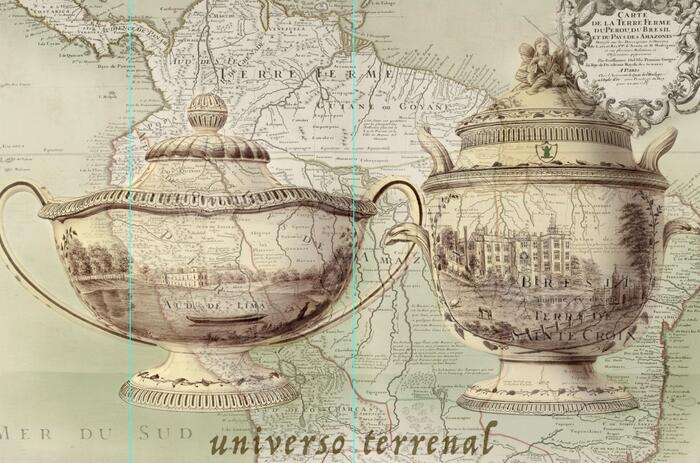
From her different interdisciplinary perspectives, Cecilia Paredes (Lima, Peru, 1950) lands in Blanca Berlin with a collection of images that deal with imaginary cartographies, displacements and human relations in their conceptual part, materialized, above all, on canvas as the main exhibition material. In Historias errantes (Wandering Stories), the Peruvian artist bets on recovering graphic materials anchored in antiquity, such as astrological charts, engravings of discoveries and maps, which become, after the manipulation of the parts, absolute compositions of impossible -but also aesthetic- iconography.
THE WANDERING STORIES OF CECILIA PAREDES, IN BLANCA BERLIN
From her different interdisciplinary perspectives, Cecilia Paredes (Lima, Peru, 1950) lands in Blanca Berlin with a collection of images that deal with imaginary cartographies, displacements and human relations in their conceptual part, materialized, above all, on canvas as the main exhibition material. In Historias errantes (Wandering Stories), the Peruvian artist bets on recovering graphic materials anchored in antiquity, such as astrological charts, engravings of discoveries and maps, which become, after the manipulation of the parts, absolute compositions of impossible -but also aesthetic- iconography.

From her different interdisciplinary perspectives, Cecilia Paredes (Lima, Peru, 1950) lands in Blanca Berlin with a collection of images that deal with imaginary cartographies, displacements and human relations in their conceptual part, materialized, above all, on canvas as the main exhibition material. In Historias errantes (Wandering Stories), the Peruvian artist bets on recovering graphic materials anchored in antiquity, such as astrological charts, engravings of discoveries and maps, which become, after the manipulation of the parts, absolute compositions of impossible -but also aesthetic- iconography.
THE WANDERING STORIES OF CECILIA PAREDES, IN BLANCA BERLIN
From her different interdisciplinary perspectives, Cecilia Paredes (Lima, Peru, 1950) lands in Blanca Berlin with a collection of images that deal with imaginary cartographies, displacements and human relations in their conceptual part, materialized, above all, on canvas as the main exhibition material. In Historias errantes (Wandering Stories), the Peruvian artist bets on recovering graphic materials anchored in antiquity, such as astrological charts, engravings of discoveries and maps, which become, after the manipulation of the parts, absolute compositions of impossible -but also aesthetic- iconography.

The two venues of MEMORIA gallery enter into a necessary dialogue by hosting the individual but connected exhibitions of Gustavo Pérez (Mexico City, Mexico, 1950) and Lin Calle (Hubei, China, 1994), who put on the table, from their techniques and perspectives, a debate of thought on the impoverishment and extinction of contemporary imaginaries.
GUSTAVO PÉREZ AND LIN CALLE CONNECT IN THE ARBOREAL, IN MEMORIAM
The two venues of MEMORIA gallery enter into a necessary dialogue by hosting the individual but connected exhibitions of Gustavo Pérez (Mexico City, Mexico, 1950) and Lin Calle (Hubei, China, 1994), who put on the table, from their techniques and perspectives, a debate of thought on the impoverishment and extinction of contemporary imaginaries.
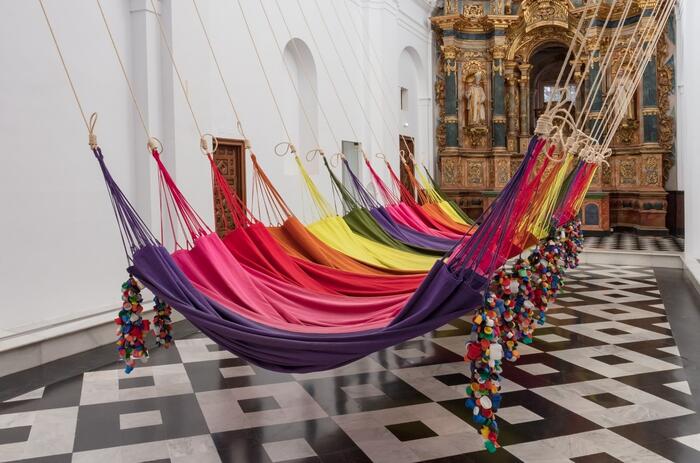
The artistic collective from Rio de Janeiro OPAVIVARÁ! intervenes in the space of the Capilla de Afuera of the Centro Andaluz de Arte Contemporáneo in Seville with its Rede social, a sensorial and materialized symbology with which the Brazilians invite the spectator to place himself in a position to negotiate and cooperate with his fellow men and women. The intervention, consisting of the unfolding of fabric hammocks that acquire the rhythm and cadence that the visitor imprints with his movement and presence and that adds sounds of snoring, follows the group's premise of building spaces and devices that offer a collaborative experience.
OPAVIVARÁ! INSTALLS ITS “SOCIAL NETWORK” IN THE CAAC
The artistic collective from Rio de Janeiro OPAVIVARÁ! intervenes in the space of the Capilla de Afuera of the Centro Andaluz de Arte Contemporáneo in Seville with its Rede social, a sensorial and materialized symbology with which the Brazilians invite the spectator to place himself in a position to negotiate and cooperate with his fellow men and women. The intervention, consisting of the unfolding of fabric hammocks that acquire the rhythm and cadence that the visitor imprints with his movement and presence and that adds sounds of snoring, follows the group's premise of building spaces and devices that offer a collaborative experience.
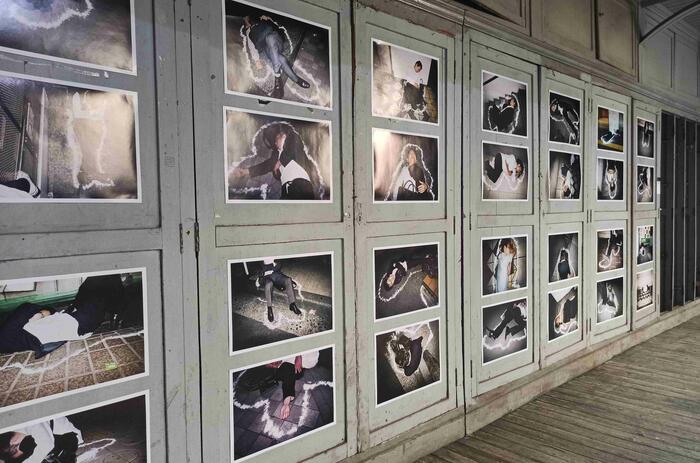
There seems to be, and increasingly so, a constant and growing debate in the social sphere about labor relations and the impact of work on people. Almost absolute concepts in current narratives such as work-life balance or resilience lack the necessary background to create that conversation. However, in order to build precisely on them, the research being done on the impact and culture of work in this new revision that Postmodernity leads to value proposals such as the one Allegra Pacheco (San Jose, Costa Rica, 1986) lands in her conceptual Dear Salaryman, which in its latest evolution is exhibited at the Museo La Neomudéjar in Madrid.
ALLEGRA PACHECO AND THE IMPACT OF THE LABOR ISSUE
There seems to be, and increasingly so, a constant and growing debate in the social sphere about labor relations and the impact of work on people. Almost absolute concepts in current narratives such as work-life balance or resilience lack the necessary background to create that conversation. However, in order to build precisely on them, the research being done on the impact and culture of work in this new revision that Postmodernity leads to value proposals such as the one Allegra Pacheco (San Jose, Costa Rica, 1986) lands in her conceptual Dear Salaryman, which in its latest evolution is exhibited at the Museo La Neomudéjar in Madrid.
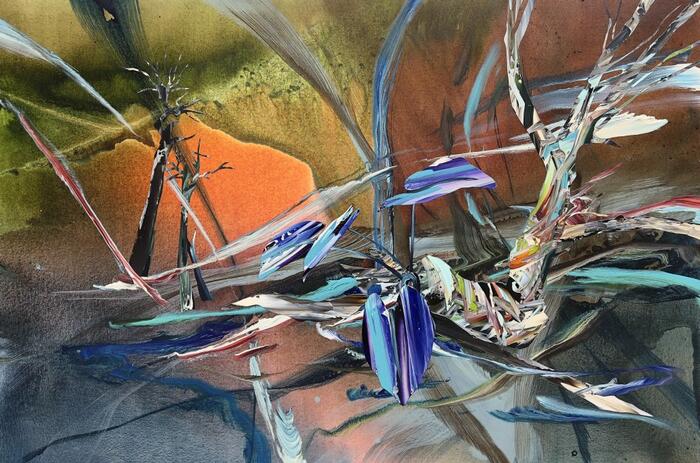
Germán Tagle (Santiago, Chile, 1976) returns to Madrid's Daniel Cuevas, where he held his first exhibition two years ago, with El territorio portátil, a show in which the Chilean artist returns to the axes of landscape, painting and culture that have been the backbone of his latest productions.
GERMÁN TAGLE'S REDEFINITION OF LANDSCAPE
Germán Tagle (Santiago, Chile, 1976) returns to Madrid's Daniel Cuevas, where he held his first exhibition two years ago, with El territorio portátil, a show in which the Chilean artist returns to the axes of landscape, painting and culture that have been the backbone of his latest productions.
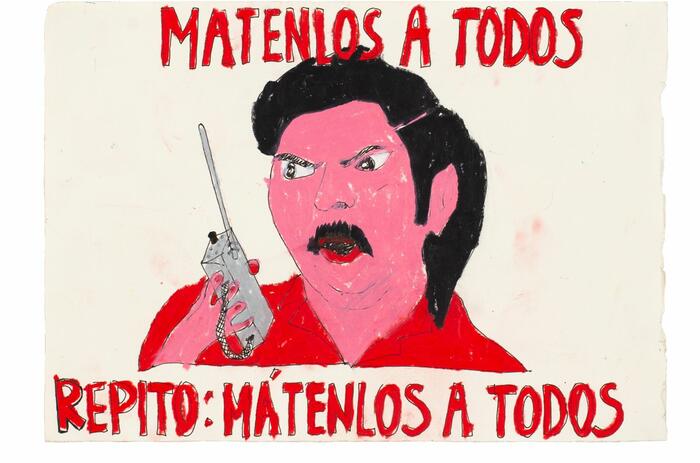
The double problem that arose from the acquisition in the 1980s of several hippopotamuses in one of the many eccentricities of the trafficker Pablo Escóbar is the starting point of a fable that, between the tragic and the comic, Camilo Restrepo (Medellín, Colombia, 1975) has managed to weave with a very successful graphic and conceptual narrative. With Cocaine Hippos Sweat Blood, the spectator faces this surrealistic story from its beginnings to the present by the hand of a figurativism that sets aside the academic and the technical for the sake of a greater aesthetic and relational concordance with that of the madness transmitted by the story itself.
THE NARCO-HYPOPOTAMUSES’ TALE, BY CAMILO RESTREPO
The double problem that arose from the acquisition in the 1980s of several hippopotamuses in one of the many eccentricities of the trafficker Pablo Escóbar is the starting point of a fable that, between the tragic and the comic, Camilo Restrepo (Medellín, Colombia, 1975) has managed to weave with a very successful graphic and conceptual narrative. With Cocaine Hippos Sweat Blood, the spectator faces this surrealistic story from its beginnings to the present by the hand of a figurativism that sets aside the academic and the technical for the sake of a greater aesthetic and relational concordance with that of the madness transmitted by the story itself.
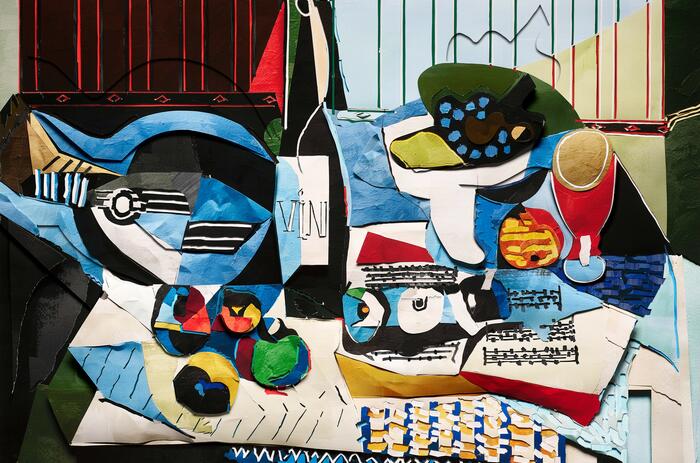
Madrid's Elba Benitez gallery has entrusted Vik Muniz (Sao Paulo, Brazil, 1961) with its first exhibition of the new season. Entitled Photocubism, the proposal is based on art historiography itself, recovering the cubist aesthetics as a substratum of the technical intervention he makes on iconic works of this movement. The Brazilian artist thus opts for this language to obtain new images that raise questions about perception and result.
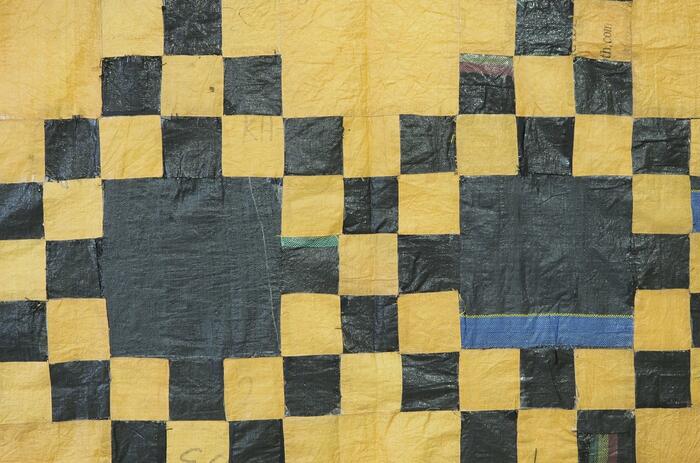
Casa de América is hosting three interconnected exhibitions in Madrid until November 30 that investigate and show the influence of the arts and the roots of pre-Columbian cultures in contemporary art and architecture.
THE PRE-COLUMBIAN ROOTS IN THE CONTEMPORARY, AT CASA DE AMERICA
Casa de América is hosting three interconnected exhibitions in Madrid until November 30 that investigate and show the influence of the arts and the roots of pre-Columbian cultures in contemporary art and architecture.
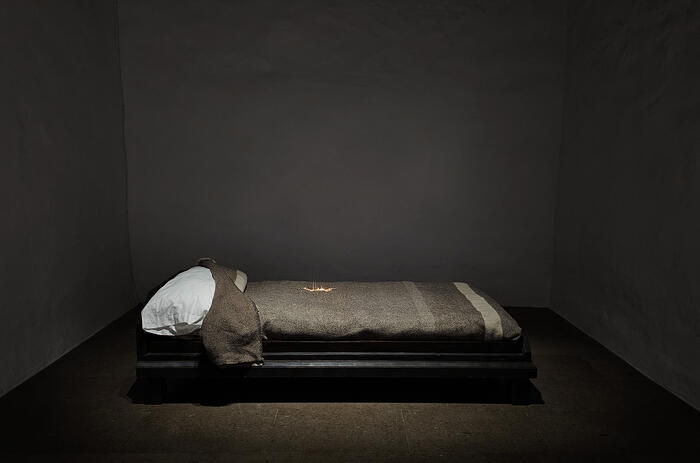
Pamen Pereira (Ferrol, Spain, 1963) unfolds her project Don't give up at Artizar gallery in Tenerife, a show made up of fourteen pieces that make up a total, but that must be seen from the prism of combination and language. However, the artist advocates for observing what is hidden behind the relationship of her works, the selection and the dialogue that the tour offers us.
PAMEN PEREIRA: SPACE, ORDER AND ELEMENTS, AT ARTIZAR
Pamen Pereira (Ferrol, Spain, 1963) unfolds her project Don't give up at Artizar gallery in Tenerife, a show made up of fourteen pieces that make up a total, but that must be seen from the prism of combination and language. However, the artist advocates for observing what is hidden behind the relationship of her works, the selection and the dialogue that the tour offers us.
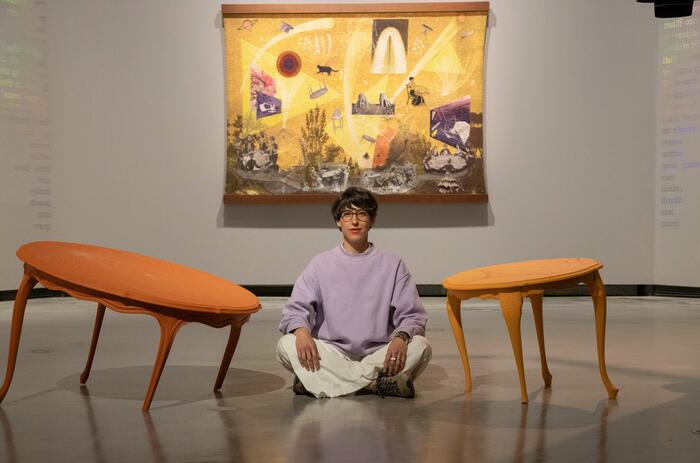
Mercedes Azpilicueta (La Plata, Argentina, 1981) lands with her dancing tables at the Centro de Creación Contemporánea de Andalucía (C3A) in an exhibition curated by Verónica Rossi and Jimena Blázquez. A visual and performance artist based in Amsterdam, her artistic practice proposes in her multi-layered works a meeting place between the past and the present through her protagonists and their expressions, some physical -but not corporeal-, such as voices; others, material, such as forms and texts; and others of a more intangible nature such as memory and remembrance.
MERCEDES AZPILICUETA AND HER “DANCING TABLES” IN C3A
Mercedes Azpilicueta (La Plata, Argentina, 1981) lands with her dancing tables at the Centro de Creación Contemporánea de Andalucía (C3A) in an exhibition curated by Verónica Rossi and Jimena Blázquez. A visual and performance artist based in Amsterdam, her artistic practice proposes in her multi-layered works a meeting place between the past and the present through her protagonists and their expressions, some physical -but not corporeal-, such as voices; others, material, such as forms and texts; and others of a more intangible nature such as memory and remembrance.

Rutas relacionales (Relational Routes) is the long-term collective with which the Lucía Mendoza gallery celebrates its tenth anniversary and with which it intends to raise awareness, through the work of about 40 artists, about several of the current thematic and philosophical axes, those that trace their need from the relationship of mankind with its environment. In these axes, we find lines of argument that deal with ecology, society and economies, passing through everything that composes them, such as political processes or the construction of identity.
"RELATIONAL ROUTES": THE LATIN AMERICAN COLLECTIVE EXHIBITION AT LUCÍA MENDOZA
Rutas relacionales (Relational Routes) is the long-term collective with which the Lucía Mendoza gallery celebrates its tenth anniversary and with which it intends to raise awareness, through the work of about 40 artists, about several of the current thematic and philosophical axes, those that trace their need from the relationship of mankind with its environment. In these axes, we find lines of argument that deal with ecology, society and economies, passing through everything that composes them, such as political processes or the construction of identity.

From her different interdisciplinary perspectives, Cecilia Paredes (Lima, Peru, 1950) lands in Blanca Berlin with a collection of images that deal with imaginary cartographies, displacements and human relations in their conceptual part, materialized, above all, on canvas as the main exhibition material. In Historias errantes (Wandering Stories), the Peruvian artist bets on recovering graphic materials anchored in antiquity, such as astrological charts, engravings of discoveries and maps, which become, after the manipulation of the parts, absolute compositions of impossible -but also aesthetic- iconography.
THE WANDERING STORIES OF CECILIA PAREDES, IN BLANCA BERLIN
From her different interdisciplinary perspectives, Cecilia Paredes (Lima, Peru, 1950) lands in Blanca Berlin with a collection of images that deal with imaginary cartographies, displacements and human relations in their conceptual part, materialized, above all, on canvas as the main exhibition material. In Historias errantes (Wandering Stories), the Peruvian artist bets on recovering graphic materials anchored in antiquity, such as astrological charts, engravings of discoveries and maps, which become, after the manipulation of the parts, absolute compositions of impossible -but also aesthetic- iconography.

The two venues of MEMORIA gallery enter into a necessary dialogue by hosting the individual but connected exhibitions of Gustavo Pérez (Mexico City, Mexico, 1950) and Lin Calle (Hubei, China, 1994), who put on the table, from their techniques and perspectives, a debate of thought on the impoverishment and extinction of contemporary imaginaries.
GUSTAVO PÉREZ AND LIN CALLE CONNECT IN THE ARBOREAL, IN MEMORIAM
The two venues of MEMORIA gallery enter into a necessary dialogue by hosting the individual but connected exhibitions of Gustavo Pérez (Mexico City, Mexico, 1950) and Lin Calle (Hubei, China, 1994), who put on the table, from their techniques and perspectives, a debate of thought on the impoverishment and extinction of contemporary imaginaries.

The artistic collective from Rio de Janeiro OPAVIVARÁ! intervenes in the space of the Capilla de Afuera of the Centro Andaluz de Arte Contemporáneo in Seville with its Rede social, a sensorial and materialized symbology with which the Brazilians invite the spectator to place himself in a position to negotiate and cooperate with his fellow men and women. The intervention, consisting of the unfolding of fabric hammocks that acquire the rhythm and cadence that the visitor imprints with his movement and presence and that adds sounds of snoring, follows the group's premise of building spaces and devices that offer a collaborative experience.
OPAVIVARÁ! INSTALLS ITS “SOCIAL NETWORK” IN THE CAAC
The artistic collective from Rio de Janeiro OPAVIVARÁ! intervenes in the space of the Capilla de Afuera of the Centro Andaluz de Arte Contemporáneo in Seville with its Rede social, a sensorial and materialized symbology with which the Brazilians invite the spectator to place himself in a position to negotiate and cooperate with his fellow men and women. The intervention, consisting of the unfolding of fabric hammocks that acquire the rhythm and cadence that the visitor imprints with his movement and presence and that adds sounds of snoring, follows the group's premise of building spaces and devices that offer a collaborative experience.

There seems to be, and increasingly so, a constant and growing debate in the social sphere about labor relations and the impact of work on people. Almost absolute concepts in current narratives such as work-life balance or resilience lack the necessary background to create that conversation. However, in order to build precisely on them, the research being done on the impact and culture of work in this new revision that Postmodernity leads to value proposals such as the one Allegra Pacheco (San Jose, Costa Rica, 1986) lands in her conceptual Dear Salaryman, which in its latest evolution is exhibited at the Museo La Neomudéjar in Madrid.
ALLEGRA PACHECO AND THE IMPACT OF THE LABOR ISSUE
There seems to be, and increasingly so, a constant and growing debate in the social sphere about labor relations and the impact of work on people. Almost absolute concepts in current narratives such as work-life balance or resilience lack the necessary background to create that conversation. However, in order to build precisely on them, the research being done on the impact and culture of work in this new revision that Postmodernity leads to value proposals such as the one Allegra Pacheco (San Jose, Costa Rica, 1986) lands in her conceptual Dear Salaryman, which in its latest evolution is exhibited at the Museo La Neomudéjar in Madrid.

Germán Tagle (Santiago, Chile, 1976) returns to Madrid's Daniel Cuevas, where he held his first exhibition two years ago, with El territorio portátil, a show in which the Chilean artist returns to the axes of landscape, painting and culture that have been the backbone of his latest productions.
GERMÁN TAGLE'S REDEFINITION OF LANDSCAPE
Germán Tagle (Santiago, Chile, 1976) returns to Madrid's Daniel Cuevas, where he held his first exhibition two years ago, with El territorio portátil, a show in which the Chilean artist returns to the axes of landscape, painting and culture that have been the backbone of his latest productions.

The double problem that arose from the acquisition in the 1980s of several hippopotamuses in one of the many eccentricities of the trafficker Pablo Escóbar is the starting point of a fable that, between the tragic and the comic, Camilo Restrepo (Medellín, Colombia, 1975) has managed to weave with a very successful graphic and conceptual narrative. With Cocaine Hippos Sweat Blood, the spectator faces this surrealistic story from its beginnings to the present by the hand of a figurativism that sets aside the academic and the technical for the sake of a greater aesthetic and relational concordance with that of the madness transmitted by the story itself.
THE NARCO-HYPOPOTAMUSES’ TALE, BY CAMILO RESTREPO
The double problem that arose from the acquisition in the 1980s of several hippopotamuses in one of the many eccentricities of the trafficker Pablo Escóbar is the starting point of a fable that, between the tragic and the comic, Camilo Restrepo (Medellín, Colombia, 1975) has managed to weave with a very successful graphic and conceptual narrative. With Cocaine Hippos Sweat Blood, the spectator faces this surrealistic story from its beginnings to the present by the hand of a figurativism that sets aside the academic and the technical for the sake of a greater aesthetic and relational concordance with that of the madness transmitted by the story itself.

Madrid's Elba Benitez gallery has entrusted Vik Muniz (Sao Paulo, Brazil, 1961) with its first exhibition of the new season. Entitled Photocubism, the proposal is based on art historiography itself, recovering the cubist aesthetics as a substratum of the technical intervention he makes on iconic works of this movement. The Brazilian artist thus opts for this language to obtain new images that raise questions about perception and result.

Casa de América is hosting three interconnected exhibitions in Madrid until November 30 that investigate and show the influence of the arts and the roots of pre-Columbian cultures in contemporary art and architecture.
THE PRE-COLUMBIAN ROOTS IN THE CONTEMPORARY, AT CASA DE AMERICA
Casa de América is hosting three interconnected exhibitions in Madrid until November 30 that investigate and show the influence of the arts and the roots of pre-Columbian cultures in contemporary art and architecture.

Pamen Pereira (Ferrol, Spain, 1963) unfolds her project Don't give up at Artizar gallery in Tenerife, a show made up of fourteen pieces that make up a total, but that must be seen from the prism of combination and language. However, the artist advocates for observing what is hidden behind the relationship of her works, the selection and the dialogue that the tour offers us.
PAMEN PEREIRA: SPACE, ORDER AND ELEMENTS, AT ARTIZAR
Pamen Pereira (Ferrol, Spain, 1963) unfolds her project Don't give up at Artizar gallery in Tenerife, a show made up of fourteen pieces that make up a total, but that must be seen from the prism of combination and language. However, the artist advocates for observing what is hidden behind the relationship of her works, the selection and the dialogue that the tour offers us.

Mercedes Azpilicueta (La Plata, Argentina, 1981) lands with her dancing tables at the Centro de Creación Contemporánea de Andalucía (C3A) in an exhibition curated by Verónica Rossi and Jimena Blázquez. A visual and performance artist based in Amsterdam, her artistic practice proposes in her multi-layered works a meeting place between the past and the present through her protagonists and their expressions, some physical -but not corporeal-, such as voices; others, material, such as forms and texts; and others of a more intangible nature such as memory and remembrance.
MERCEDES AZPILICUETA AND HER “DANCING TABLES” IN C3A
Mercedes Azpilicueta (La Plata, Argentina, 1981) lands with her dancing tables at the Centro de Creación Contemporánea de Andalucía (C3A) in an exhibition curated by Verónica Rossi and Jimena Blázquez. A visual and performance artist based in Amsterdam, her artistic practice proposes in her multi-layered works a meeting place between the past and the present through her protagonists and their expressions, some physical -but not corporeal-, such as voices; others, material, such as forms and texts; and others of a more intangible nature such as memory and remembrance.

Rutas relacionales (Relational Routes) is the long-term collective with which the Lucía Mendoza gallery celebrates its tenth anniversary and with which it intends to raise awareness, through the work of about 40 artists, about several of the current thematic and philosophical axes, those that trace their need from the relationship of mankind with its environment. In these axes, we find lines of argument that deal with ecology, society and economies, passing through everything that composes them, such as political processes or the construction of identity.
"RELATIONAL ROUTES": THE LATIN AMERICAN COLLECTIVE EXHIBITION AT LUCÍA MENDOZA
Rutas relacionales (Relational Routes) is the long-term collective with which the Lucía Mendoza gallery celebrates its tenth anniversary and with which it intends to raise awareness, through the work of about 40 artists, about several of the current thematic and philosophical axes, those that trace their need from the relationship of mankind with its environment. In these axes, we find lines of argument that deal with ecology, society and economies, passing through everything that composes them, such as political processes or the construction of identity.

From her different interdisciplinary perspectives, Cecilia Paredes (Lima, Peru, 1950) lands in Blanca Berlin with a collection of images that deal with imaginary cartographies, displacements and human relations in their conceptual part, materialized, above all, on canvas as the main exhibition material. In Historias errantes (Wandering Stories), the Peruvian artist bets on recovering graphic materials anchored in antiquity, such as astrological charts, engravings of discoveries and maps, which become, after the manipulation of the parts, absolute compositions of impossible -but also aesthetic- iconography.
THE WANDERING STORIES OF CECILIA PAREDES, IN BLANCA BERLIN
From her different interdisciplinary perspectives, Cecilia Paredes (Lima, Peru, 1950) lands in Blanca Berlin with a collection of images that deal with imaginary cartographies, displacements and human relations in their conceptual part, materialized, above all, on canvas as the main exhibition material. In Historias errantes (Wandering Stories), the Peruvian artist bets on recovering graphic materials anchored in antiquity, such as astrological charts, engravings of discoveries and maps, which become, after the manipulation of the parts, absolute compositions of impossible -but also aesthetic- iconography.

The two venues of MEMORIA gallery enter into a necessary dialogue by hosting the individual but connected exhibitions of Gustavo Pérez (Mexico City, Mexico, 1950) and Lin Calle (Hubei, China, 1994), who put on the table, from their techniques and perspectives, a debate of thought on the impoverishment and extinction of contemporary imaginaries.
GUSTAVO PÉREZ AND LIN CALLE CONNECT IN THE ARBOREAL, IN MEMORIAM
The two venues of MEMORIA gallery enter into a necessary dialogue by hosting the individual but connected exhibitions of Gustavo Pérez (Mexico City, Mexico, 1950) and Lin Calle (Hubei, China, 1994), who put on the table, from their techniques and perspectives, a debate of thought on the impoverishment and extinction of contemporary imaginaries.

The artistic collective from Rio de Janeiro OPAVIVARÁ! intervenes in the space of the Capilla de Afuera of the Centro Andaluz de Arte Contemporáneo in Seville with its Rede social, a sensorial and materialized symbology with which the Brazilians invite the spectator to place himself in a position to negotiate and cooperate with his fellow men and women. The intervention, consisting of the unfolding of fabric hammocks that acquire the rhythm and cadence that the visitor imprints with his movement and presence and that adds sounds of snoring, follows the group's premise of building spaces and devices that offer a collaborative experience.
OPAVIVARÁ! INSTALLS ITS “SOCIAL NETWORK” IN THE CAAC
The artistic collective from Rio de Janeiro OPAVIVARÁ! intervenes in the space of the Capilla de Afuera of the Centro Andaluz de Arte Contemporáneo in Seville with its Rede social, a sensorial and materialized symbology with which the Brazilians invite the spectator to place himself in a position to negotiate and cooperate with his fellow men and women. The intervention, consisting of the unfolding of fabric hammocks that acquire the rhythm and cadence that the visitor imprints with his movement and presence and that adds sounds of snoring, follows the group's premise of building spaces and devices that offer a collaborative experience.

There seems to be, and increasingly so, a constant and growing debate in the social sphere about labor relations and the impact of work on people. Almost absolute concepts in current narratives such as work-life balance or resilience lack the necessary background to create that conversation. However, in order to build precisely on them, the research being done on the impact and culture of work in this new revision that Postmodernity leads to value proposals such as the one Allegra Pacheco (San Jose, Costa Rica, 1986) lands in her conceptual Dear Salaryman, which in its latest evolution is exhibited at the Museo La Neomudéjar in Madrid.
ALLEGRA PACHECO AND THE IMPACT OF THE LABOR ISSUE
There seems to be, and increasingly so, a constant and growing debate in the social sphere about labor relations and the impact of work on people. Almost absolute concepts in current narratives such as work-life balance or resilience lack the necessary background to create that conversation. However, in order to build precisely on them, the research being done on the impact and culture of work in this new revision that Postmodernity leads to value proposals such as the one Allegra Pacheco (San Jose, Costa Rica, 1986) lands in her conceptual Dear Salaryman, which in its latest evolution is exhibited at the Museo La Neomudéjar in Madrid.

Germán Tagle (Santiago, Chile, 1976) returns to Madrid's Daniel Cuevas, where he held his first exhibition two years ago, with El territorio portátil, a show in which the Chilean artist returns to the axes of landscape, painting and culture that have been the backbone of his latest productions.
GERMÁN TAGLE'S REDEFINITION OF LANDSCAPE
Germán Tagle (Santiago, Chile, 1976) returns to Madrid's Daniel Cuevas, where he held his first exhibition two years ago, with El territorio portátil, a show in which the Chilean artist returns to the axes of landscape, painting and culture that have been the backbone of his latest productions.

The double problem that arose from the acquisition in the 1980s of several hippopotamuses in one of the many eccentricities of the trafficker Pablo Escóbar is the starting point of a fable that, between the tragic and the comic, Camilo Restrepo (Medellín, Colombia, 1975) has managed to weave with a very successful graphic and conceptual narrative. With Cocaine Hippos Sweat Blood, the spectator faces this surrealistic story from its beginnings to the present by the hand of a figurativism that sets aside the academic and the technical for the sake of a greater aesthetic and relational concordance with that of the madness transmitted by the story itself.
THE NARCO-HYPOPOTAMUSES’ TALE, BY CAMILO RESTREPO
The double problem that arose from the acquisition in the 1980s of several hippopotamuses in one of the many eccentricities of the trafficker Pablo Escóbar is the starting point of a fable that, between the tragic and the comic, Camilo Restrepo (Medellín, Colombia, 1975) has managed to weave with a very successful graphic and conceptual narrative. With Cocaine Hippos Sweat Blood, the spectator faces this surrealistic story from its beginnings to the present by the hand of a figurativism that sets aside the academic and the technical for the sake of a greater aesthetic and relational concordance with that of the madness transmitted by the story itself.

Madrid's Elba Benitez gallery has entrusted Vik Muniz (Sao Paulo, Brazil, 1961) with its first exhibition of the new season. Entitled Photocubism, the proposal is based on art historiography itself, recovering the cubist aesthetics as a substratum of the technical intervention he makes on iconic works of this movement. The Brazilian artist thus opts for this language to obtain new images that raise questions about perception and result.

Casa de América is hosting three interconnected exhibitions in Madrid until November 30 that investigate and show the influence of the arts and the roots of pre-Columbian cultures in contemporary art and architecture.
THE PRE-COLUMBIAN ROOTS IN THE CONTEMPORARY, AT CASA DE AMERICA
Casa de América is hosting three interconnected exhibitions in Madrid until November 30 that investigate and show the influence of the arts and the roots of pre-Columbian cultures in contemporary art and architecture.

Pamen Pereira (Ferrol, Spain, 1963) unfolds her project Don't give up at Artizar gallery in Tenerife, a show made up of fourteen pieces that make up a total, but that must be seen from the prism of combination and language. However, the artist advocates for observing what is hidden behind the relationship of her works, the selection and the dialogue that the tour offers us.
PAMEN PEREIRA: SPACE, ORDER AND ELEMENTS, AT ARTIZAR
Pamen Pereira (Ferrol, Spain, 1963) unfolds her project Don't give up at Artizar gallery in Tenerife, a show made up of fourteen pieces that make up a total, but that must be seen from the prism of combination and language. However, the artist advocates for observing what is hidden behind the relationship of her works, the selection and the dialogue that the tour offers us.

Mercedes Azpilicueta (La Plata, Argentina, 1981) lands with her dancing tables at the Centro de Creación Contemporánea de Andalucía (C3A) in an exhibition curated by Verónica Rossi and Jimena Blázquez. A visual and performance artist based in Amsterdam, her artistic practice proposes in her multi-layered works a meeting place between the past and the present through her protagonists and their expressions, some physical -but not corporeal-, such as voices; others, material, such as forms and texts; and others of a more intangible nature such as memory and remembrance.
MERCEDES AZPILICUETA AND HER “DANCING TABLES” IN C3A
Mercedes Azpilicueta (La Plata, Argentina, 1981) lands with her dancing tables at the Centro de Creación Contemporánea de Andalucía (C3A) in an exhibition curated by Verónica Rossi and Jimena Blázquez. A visual and performance artist based in Amsterdam, her artistic practice proposes in her multi-layered works a meeting place between the past and the present through her protagonists and their expressions, some physical -but not corporeal-, such as voices; others, material, such as forms and texts; and others of a more intangible nature such as memory and remembrance.

Rutas relacionales (Relational Routes) is the long-term collective with which the Lucía Mendoza gallery celebrates its tenth anniversary and with which it intends to raise awareness, through the work of about 40 artists, about several of the current thematic and philosophical axes, those that trace their need from the relationship of mankind with its environment. In these axes, we find lines of argument that deal with ecology, society and economies, passing through everything that composes them, such as political processes or the construction of identity.
"RELATIONAL ROUTES": THE LATIN AMERICAN COLLECTIVE EXHIBITION AT LUCÍA MENDOZA
Rutas relacionales (Relational Routes) is the long-term collective with which the Lucía Mendoza gallery celebrates its tenth anniversary and with which it intends to raise awareness, through the work of about 40 artists, about several of the current thematic and philosophical axes, those that trace their need from the relationship of mankind with its environment. In these axes, we find lines of argument that deal with ecology, society and economies, passing through everything that composes them, such as political processes or the construction of identity.

From her different interdisciplinary perspectives, Cecilia Paredes (Lima, Peru, 1950) lands in Blanca Berlin with a collection of images that deal with imaginary cartographies, displacements and human relations in their conceptual part, materialized, above all, on canvas as the main exhibition material. In Historias errantes (Wandering Stories), the Peruvian artist bets on recovering graphic materials anchored in antiquity, such as astrological charts, engravings of discoveries and maps, which become, after the manipulation of the parts, absolute compositions of impossible -but also aesthetic- iconography.
THE WANDERING STORIES OF CECILIA PAREDES, IN BLANCA BERLIN
From her different interdisciplinary perspectives, Cecilia Paredes (Lima, Peru, 1950) lands in Blanca Berlin with a collection of images that deal with imaginary cartographies, displacements and human relations in their conceptual part, materialized, above all, on canvas as the main exhibition material. In Historias errantes (Wandering Stories), the Peruvian artist bets on recovering graphic materials anchored in antiquity, such as astrological charts, engravings of discoveries and maps, which become, after the manipulation of the parts, absolute compositions of impossible -but also aesthetic- iconography.

The two venues of MEMORIA gallery enter into a necessary dialogue by hosting the individual but connected exhibitions of Gustavo Pérez (Mexico City, Mexico, 1950) and Lin Calle (Hubei, China, 1994), who put on the table, from their techniques and perspectives, a debate of thought on the impoverishment and extinction of contemporary imaginaries.
GUSTAVO PÉREZ AND LIN CALLE CONNECT IN THE ARBOREAL, IN MEMORIAM
The two venues of MEMORIA gallery enter into a necessary dialogue by hosting the individual but connected exhibitions of Gustavo Pérez (Mexico City, Mexico, 1950) and Lin Calle (Hubei, China, 1994), who put on the table, from their techniques and perspectives, a debate of thought on the impoverishment and extinction of contemporary imaginaries.

The artistic collective from Rio de Janeiro OPAVIVARÁ! intervenes in the space of the Capilla de Afuera of the Centro Andaluz de Arte Contemporáneo in Seville with its Rede social, a sensorial and materialized symbology with which the Brazilians invite the spectator to place himself in a position to negotiate and cooperate with his fellow men and women. The intervention, consisting of the unfolding of fabric hammocks that acquire the rhythm and cadence that the visitor imprints with his movement and presence and that adds sounds of snoring, follows the group's premise of building spaces and devices that offer a collaborative experience.
OPAVIVARÁ! INSTALLS ITS “SOCIAL NETWORK” IN THE CAAC
The artistic collective from Rio de Janeiro OPAVIVARÁ! intervenes in the space of the Capilla de Afuera of the Centro Andaluz de Arte Contemporáneo in Seville with its Rede social, a sensorial and materialized symbology with which the Brazilians invite the spectator to place himself in a position to negotiate and cooperate with his fellow men and women. The intervention, consisting of the unfolding of fabric hammocks that acquire the rhythm and cadence that the visitor imprints with his movement and presence and that adds sounds of snoring, follows the group's premise of building spaces and devices that offer a collaborative experience.

There seems to be, and increasingly so, a constant and growing debate in the social sphere about labor relations and the impact of work on people. Almost absolute concepts in current narratives such as work-life balance or resilience lack the necessary background to create that conversation. However, in order to build precisely on them, the research being done on the impact and culture of work in this new revision that Postmodernity leads to value proposals such as the one Allegra Pacheco (San Jose, Costa Rica, 1986) lands in her conceptual Dear Salaryman, which in its latest evolution is exhibited at the Museo La Neomudéjar in Madrid.
ALLEGRA PACHECO AND THE IMPACT OF THE LABOR ISSUE
There seems to be, and increasingly so, a constant and growing debate in the social sphere about labor relations and the impact of work on people. Almost absolute concepts in current narratives such as work-life balance or resilience lack the necessary background to create that conversation. However, in order to build precisely on them, the research being done on the impact and culture of work in this new revision that Postmodernity leads to value proposals such as the one Allegra Pacheco (San Jose, Costa Rica, 1986) lands in her conceptual Dear Salaryman, which in its latest evolution is exhibited at the Museo La Neomudéjar in Madrid.

Germán Tagle (Santiago, Chile, 1976) returns to Madrid's Daniel Cuevas, where he held his first exhibition two years ago, with El territorio portátil, a show in which the Chilean artist returns to the axes of landscape, painting and culture that have been the backbone of his latest productions.
GERMÁN TAGLE'S REDEFINITION OF LANDSCAPE
Germán Tagle (Santiago, Chile, 1976) returns to Madrid's Daniel Cuevas, where he held his first exhibition two years ago, with El territorio portátil, a show in which the Chilean artist returns to the axes of landscape, painting and culture that have been the backbone of his latest productions.

The double problem that arose from the acquisition in the 1980s of several hippopotamuses in one of the many eccentricities of the trafficker Pablo Escóbar is the starting point of a fable that, between the tragic and the comic, Camilo Restrepo (Medellín, Colombia, 1975) has managed to weave with a very successful graphic and conceptual narrative. With Cocaine Hippos Sweat Blood, the spectator faces this surrealistic story from its beginnings to the present by the hand of a figurativism that sets aside the academic and the technical for the sake of a greater aesthetic and relational concordance with that of the madness transmitted by the story itself.
THE NARCO-HYPOPOTAMUSES’ TALE, BY CAMILO RESTREPO
The double problem that arose from the acquisition in the 1980s of several hippopotamuses in one of the many eccentricities of the trafficker Pablo Escóbar is the starting point of a fable that, between the tragic and the comic, Camilo Restrepo (Medellín, Colombia, 1975) has managed to weave with a very successful graphic and conceptual narrative. With Cocaine Hippos Sweat Blood, the spectator faces this surrealistic story from its beginnings to the present by the hand of a figurativism that sets aside the academic and the technical for the sake of a greater aesthetic and relational concordance with that of the madness transmitted by the story itself.

Madrid's Elba Benitez gallery has entrusted Vik Muniz (Sao Paulo, Brazil, 1961) with its first exhibition of the new season. Entitled Photocubism, the proposal is based on art historiography itself, recovering the cubist aesthetics as a substratum of the technical intervention he makes on iconic works of this movement. The Brazilian artist thus opts for this language to obtain new images that raise questions about perception and result.

Casa de América is hosting three interconnected exhibitions in Madrid until November 30 that investigate and show the influence of the arts and the roots of pre-Columbian cultures in contemporary art and architecture.
THE PRE-COLUMBIAN ROOTS IN THE CONTEMPORARY, AT CASA DE AMERICA
Casa de América is hosting three interconnected exhibitions in Madrid until November 30 that investigate and show the influence of the arts and the roots of pre-Columbian cultures in contemporary art and architecture.

Pamen Pereira (Ferrol, Spain, 1963) unfolds her project Don't give up at Artizar gallery in Tenerife, a show made up of fourteen pieces that make up a total, but that must be seen from the prism of combination and language. However, the artist advocates for observing what is hidden behind the relationship of her works, the selection and the dialogue that the tour offers us.
PAMEN PEREIRA: SPACE, ORDER AND ELEMENTS, AT ARTIZAR
Pamen Pereira (Ferrol, Spain, 1963) unfolds her project Don't give up at Artizar gallery in Tenerife, a show made up of fourteen pieces that make up a total, but that must be seen from the prism of combination and language. However, the artist advocates for observing what is hidden behind the relationship of her works, the selection and the dialogue that the tour offers us.

Mercedes Azpilicueta (La Plata, Argentina, 1981) lands with her dancing tables at the Centro de Creación Contemporánea de Andalucía (C3A) in an exhibition curated by Verónica Rossi and Jimena Blázquez. A visual and performance artist based in Amsterdam, her artistic practice proposes in her multi-layered works a meeting place between the past and the present through her protagonists and their expressions, some physical -but not corporeal-, such as voices; others, material, such as forms and texts; and others of a more intangible nature such as memory and remembrance.
MERCEDES AZPILICUETA AND HER “DANCING TABLES” IN C3A
Mercedes Azpilicueta (La Plata, Argentina, 1981) lands with her dancing tables at the Centro de Creación Contemporánea de Andalucía (C3A) in an exhibition curated by Verónica Rossi and Jimena Blázquez. A visual and performance artist based in Amsterdam, her artistic practice proposes in her multi-layered works a meeting place between the past and the present through her protagonists and their expressions, some physical -but not corporeal-, such as voices; others, material, such as forms and texts; and others of a more intangible nature such as memory and remembrance.

Rutas relacionales (Relational Routes) is the long-term collective with which the Lucía Mendoza gallery celebrates its tenth anniversary and with which it intends to raise awareness, through the work of about 40 artists, about several of the current thematic and philosophical axes, those that trace their need from the relationship of mankind with its environment. In these axes, we find lines of argument that deal with ecology, society and economies, passing through everything that composes them, such as political processes or the construction of identity.
"RELATIONAL ROUTES": THE LATIN AMERICAN COLLECTIVE EXHIBITION AT LUCÍA MENDOZA
Rutas relacionales (Relational Routes) is the long-term collective with which the Lucía Mendoza gallery celebrates its tenth anniversary and with which it intends to raise awareness, through the work of about 40 artists, about several of the current thematic and philosophical axes, those that trace their need from the relationship of mankind with its environment. In these axes, we find lines of argument that deal with ecology, society and economies, passing through everything that composes them, such as political processes or the construction of identity.

From her different interdisciplinary perspectives, Cecilia Paredes (Lima, Peru, 1950) lands in Blanca Berlin with a collection of images that deal with imaginary cartographies, displacements and human relations in their conceptual part, materialized, above all, on canvas as the main exhibition material. In Historias errantes (Wandering Stories), the Peruvian artist bets on recovering graphic materials anchored in antiquity, such as astrological charts, engravings of discoveries and maps, which become, after the manipulation of the parts, absolute compositions of impossible -but also aesthetic- iconography.
THE WANDERING STORIES OF CECILIA PAREDES, IN BLANCA BERLIN
From her different interdisciplinary perspectives, Cecilia Paredes (Lima, Peru, 1950) lands in Blanca Berlin with a collection of images that deal with imaginary cartographies, displacements and human relations in their conceptual part, materialized, above all, on canvas as the main exhibition material. In Historias errantes (Wandering Stories), the Peruvian artist bets on recovering graphic materials anchored in antiquity, such as astrological charts, engravings of discoveries and maps, which become, after the manipulation of the parts, absolute compositions of impossible -but also aesthetic- iconography.

The two venues of MEMORIA gallery enter into a necessary dialogue by hosting the individual but connected exhibitions of Gustavo Pérez (Mexico City, Mexico, 1950) and Lin Calle (Hubei, China, 1994), who put on the table, from their techniques and perspectives, a debate of thought on the impoverishment and extinction of contemporary imaginaries.
GUSTAVO PÉREZ AND LIN CALLE CONNECT IN THE ARBOREAL, IN MEMORIAM
The two venues of MEMORIA gallery enter into a necessary dialogue by hosting the individual but connected exhibitions of Gustavo Pérez (Mexico City, Mexico, 1950) and Lin Calle (Hubei, China, 1994), who put on the table, from their techniques and perspectives, a debate of thought on the impoverishment and extinction of contemporary imaginaries.

The artistic collective from Rio de Janeiro OPAVIVARÁ! intervenes in the space of the Capilla de Afuera of the Centro Andaluz de Arte Contemporáneo in Seville with its Rede social, a sensorial and materialized symbology with which the Brazilians invite the spectator to place himself in a position to negotiate and cooperate with his fellow men and women. The intervention, consisting of the unfolding of fabric hammocks that acquire the rhythm and cadence that the visitor imprints with his movement and presence and that adds sounds of snoring, follows the group's premise of building spaces and devices that offer a collaborative experience.
OPAVIVARÁ! INSTALLS ITS “SOCIAL NETWORK” IN THE CAAC
The artistic collective from Rio de Janeiro OPAVIVARÁ! intervenes in the space of the Capilla de Afuera of the Centro Andaluz de Arte Contemporáneo in Seville with its Rede social, a sensorial and materialized symbology with which the Brazilians invite the spectator to place himself in a position to negotiate and cooperate with his fellow men and women. The intervention, consisting of the unfolding of fabric hammocks that acquire the rhythm and cadence that the visitor imprints with his movement and presence and that adds sounds of snoring, follows the group's premise of building spaces and devices that offer a collaborative experience.

There seems to be, and increasingly so, a constant and growing debate in the social sphere about labor relations and the impact of work on people. Almost absolute concepts in current narratives such as work-life balance or resilience lack the necessary background to create that conversation. However, in order to build precisely on them, the research being done on the impact and culture of work in this new revision that Postmodernity leads to value proposals such as the one Allegra Pacheco (San Jose, Costa Rica, 1986) lands in her conceptual Dear Salaryman, which in its latest evolution is exhibited at the Museo La Neomudéjar in Madrid.
ALLEGRA PACHECO AND THE IMPACT OF THE LABOR ISSUE
There seems to be, and increasingly so, a constant and growing debate in the social sphere about labor relations and the impact of work on people. Almost absolute concepts in current narratives such as work-life balance or resilience lack the necessary background to create that conversation. However, in order to build precisely on them, the research being done on the impact and culture of work in this new revision that Postmodernity leads to value proposals such as the one Allegra Pacheco (San Jose, Costa Rica, 1986) lands in her conceptual Dear Salaryman, which in its latest evolution is exhibited at the Museo La Neomudéjar in Madrid.

Germán Tagle (Santiago, Chile, 1976) returns to Madrid's Daniel Cuevas, where he held his first exhibition two years ago, with El territorio portátil, a show in which the Chilean artist returns to the axes of landscape, painting and culture that have been the backbone of his latest productions.
GERMÁN TAGLE'S REDEFINITION OF LANDSCAPE
Germán Tagle (Santiago, Chile, 1976) returns to Madrid's Daniel Cuevas, where he held his first exhibition two years ago, with El territorio portátil, a show in which the Chilean artist returns to the axes of landscape, painting and culture that have been the backbone of his latest productions.

The double problem that arose from the acquisition in the 1980s of several hippopotamuses in one of the many eccentricities of the trafficker Pablo Escóbar is the starting point of a fable that, between the tragic and the comic, Camilo Restrepo (Medellín, Colombia, 1975) has managed to weave with a very successful graphic and conceptual narrative. With Cocaine Hippos Sweat Blood, the spectator faces this surrealistic story from its beginnings to the present by the hand of a figurativism that sets aside the academic and the technical for the sake of a greater aesthetic and relational concordance with that of the madness transmitted by the story itself.
THE NARCO-HYPOPOTAMUSES’ TALE, BY CAMILO RESTREPO
The double problem that arose from the acquisition in the 1980s of several hippopotamuses in one of the many eccentricities of the trafficker Pablo Escóbar is the starting point of a fable that, between the tragic and the comic, Camilo Restrepo (Medellín, Colombia, 1975) has managed to weave with a very successful graphic and conceptual narrative. With Cocaine Hippos Sweat Blood, the spectator faces this surrealistic story from its beginnings to the present by the hand of a figurativism that sets aside the academic and the technical for the sake of a greater aesthetic and relational concordance with that of the madness transmitted by the story itself.

Madrid's Elba Benitez gallery has entrusted Vik Muniz (Sao Paulo, Brazil, 1961) with its first exhibition of the new season. Entitled Photocubism, the proposal is based on art historiography itself, recovering the cubist aesthetics as a substratum of the technical intervention he makes on iconic works of this movement. The Brazilian artist thus opts for this language to obtain new images that raise questions about perception and result.

Casa de América is hosting three interconnected exhibitions in Madrid until November 30 that investigate and show the influence of the arts and the roots of pre-Columbian cultures in contemporary art and architecture.
THE PRE-COLUMBIAN ROOTS IN THE CONTEMPORARY, AT CASA DE AMERICA
Casa de América is hosting three interconnected exhibitions in Madrid until November 30 that investigate and show the influence of the arts and the roots of pre-Columbian cultures in contemporary art and architecture.

Pamen Pereira (Ferrol, Spain, 1963) unfolds her project Don't give up at Artizar gallery in Tenerife, a show made up of fourteen pieces that make up a total, but that must be seen from the prism of combination and language. However, the artist advocates for observing what is hidden behind the relationship of her works, the selection and the dialogue that the tour offers us.
PAMEN PEREIRA: SPACE, ORDER AND ELEMENTS, AT ARTIZAR
Pamen Pereira (Ferrol, Spain, 1963) unfolds her project Don't give up at Artizar gallery in Tenerife, a show made up of fourteen pieces that make up a total, but that must be seen from the prism of combination and language. However, the artist advocates for observing what is hidden behind the relationship of her works, the selection and the dialogue that the tour offers us.

Mercedes Azpilicueta (La Plata, Argentina, 1981) lands with her dancing tables at the Centro de Creación Contemporánea de Andalucía (C3A) in an exhibition curated by Verónica Rossi and Jimena Blázquez. A visual and performance artist based in Amsterdam, her artistic practice proposes in her multi-layered works a meeting place between the past and the present through her protagonists and their expressions, some physical -but not corporeal-, such as voices; others, material, such as forms and texts; and others of a more intangible nature such as memory and remembrance.
MERCEDES AZPILICUETA AND HER “DANCING TABLES” IN C3A
Mercedes Azpilicueta (La Plata, Argentina, 1981) lands with her dancing tables at the Centro de Creación Contemporánea de Andalucía (C3A) in an exhibition curated by Verónica Rossi and Jimena Blázquez. A visual and performance artist based in Amsterdam, her artistic practice proposes in her multi-layered works a meeting place between the past and the present through her protagonists and their expressions, some physical -but not corporeal-, such as voices; others, material, such as forms and texts; and others of a more intangible nature such as memory and remembrance.

Rutas relacionales (Relational Routes) is the long-term collective with which the Lucía Mendoza gallery celebrates its tenth anniversary and with which it intends to raise awareness, through the work of about 40 artists, about several of the current thematic and philosophical axes, those that trace their need from the relationship of mankind with its environment. In these axes, we find lines of argument that deal with ecology, society and economies, passing through everything that composes them, such as political processes or the construction of identity.
"RELATIONAL ROUTES": THE LATIN AMERICAN COLLECTIVE EXHIBITION AT LUCÍA MENDOZA
Rutas relacionales (Relational Routes) is the long-term collective with which the Lucía Mendoza gallery celebrates its tenth anniversary and with which it intends to raise awareness, through the work of about 40 artists, about several of the current thematic and philosophical axes, those that trace their need from the relationship of mankind with its environment. In these axes, we find lines of argument that deal with ecology, society and economies, passing through everything that composes them, such as political processes or the construction of identity.




